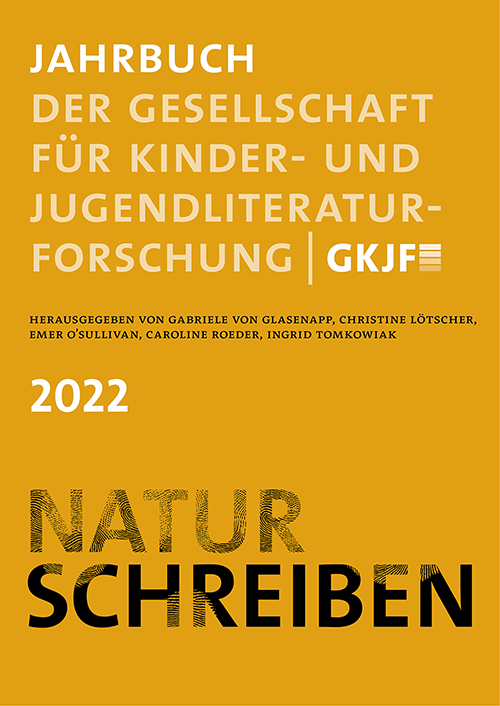Ökopassionen
Plädoyer für eine neomaterialistische Lektüre von Kinder- und Jugendmedien im Anthropozän
DOI:
https://doi.org/10.21248/gkjf-jb.85Abstract
[English title and abstract below]
Die environmental humanities florieren auch im deutschsprachigen Raum, und Konzepte der neomaterialistischen Theorie finden mehr und mehr Eingang in populäre Narrative rund um Klimawandel und Ökologie. Das zeigt sich in Genres wie Nature Writing und Climate Fiction, die mit Metaphern von Verwobenheit (entanglement) operieren, ebenso wie in den zahllosen Kinder- und Jugendbüchern, die ökologische Themen aufgreifen und Geschichten erzählen, in denen es um eine besondere Affinität zwischen Kindern und nichtmenschlichen Wesen geht. Dabei stehen oft die Emotionen der kindlichen und jugendlichen Figuren im Zentrum, ihre Angst, Sorge, Empörung und Wut angesichts des Schwindens der Artenvielfalt. Diese Emotionen, wie ich in diesem Beitrag zeigen möchte, bieten für Kinder- und Jugendmedien Zugang zu einer Vielfalt von Erzählungen rund um das Zusammenleben von Menschen und nichtmenschlichen Wesen, rund um die Bedeutung, die den vielfältigen Erfahrungen mit Tieren, Pflanzen und Landschaften zugeschrieben wird. So entsteht aus der Tradition des Erzählens aus der Perspektive von Kindern und Jugendlichen ein neuer Blick auf eine vielfach verwobene Welt – mitunter begleitet von einer kritischen Auseinandersetzung mit popularisierten neomaterialistischen Topoi. Kindliche und jugendliche Protagonist:innen werden mit ihren Ökopassionen zu Reflexionsfiguren im Verhältnis von Mensch, Natur und Medien.
Ecopassions
Towards a New Materialist Reading of Children’s and Young Adult Media in the Anthropocene
Environmental humanities are flourishing in the German-speaking world, and concepts of new materialist theory are increasingly finding their way into popular narratives about climate change and ecology. This is evident in genres such as nature writing and climate fiction that operate with metaphors of entanglement, but also in the countless books for children and young adults books that take up ecological themes and tell stories about special affinities between children and non-human beings. These often focus on the emotions of the child and adolescent characters, on their fear, concern, outrage and anger in the face of disappearing biodiversity. These emotions, as I will show in this article, allow children's and youth media to access a variety of narratives about the coexistence of human and nonhuman beings, and about the meaning ascribed to the wide range of experience with animals, plants, and landscapes. A new perspective on a multiply interwoven world thus emerges from the tradition of storytelling from the point of view of children and young people, sometimes accompanied by a critical examination of popularised new materialist topoi. With their ecopassions, young protagonists become tropes of reflection in the relationship between humans, nature and media.
Downloads
Veröffentlicht
Ausgabe
Rubrik
Lizenz
Copyright (c) 2022 Jahrbuch der Gesellschaft für Kinder- und Jugendliteraturforschung

Dieses Werk steht unter der Lizenz Creative Commons Namensnennung - Nicht-kommerziell 4.0 International.





